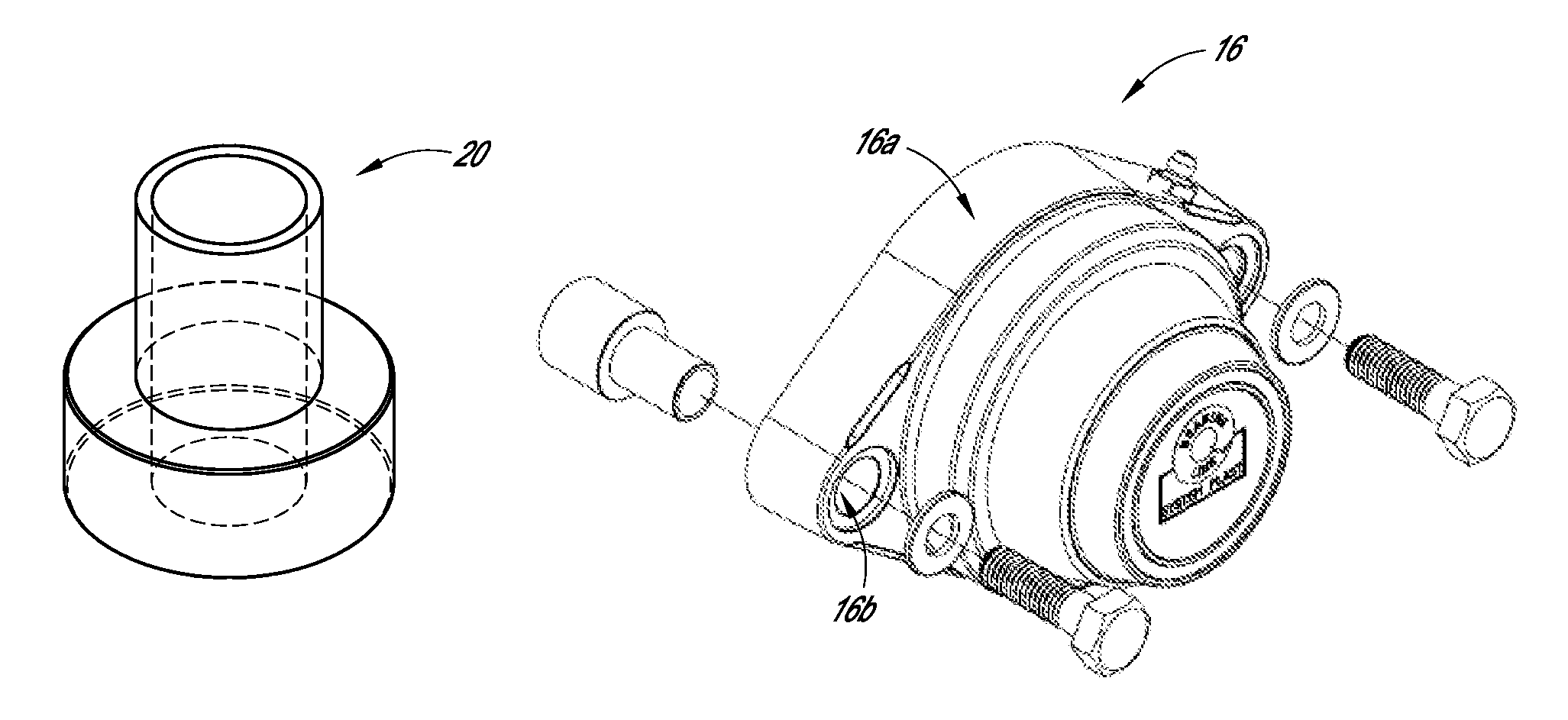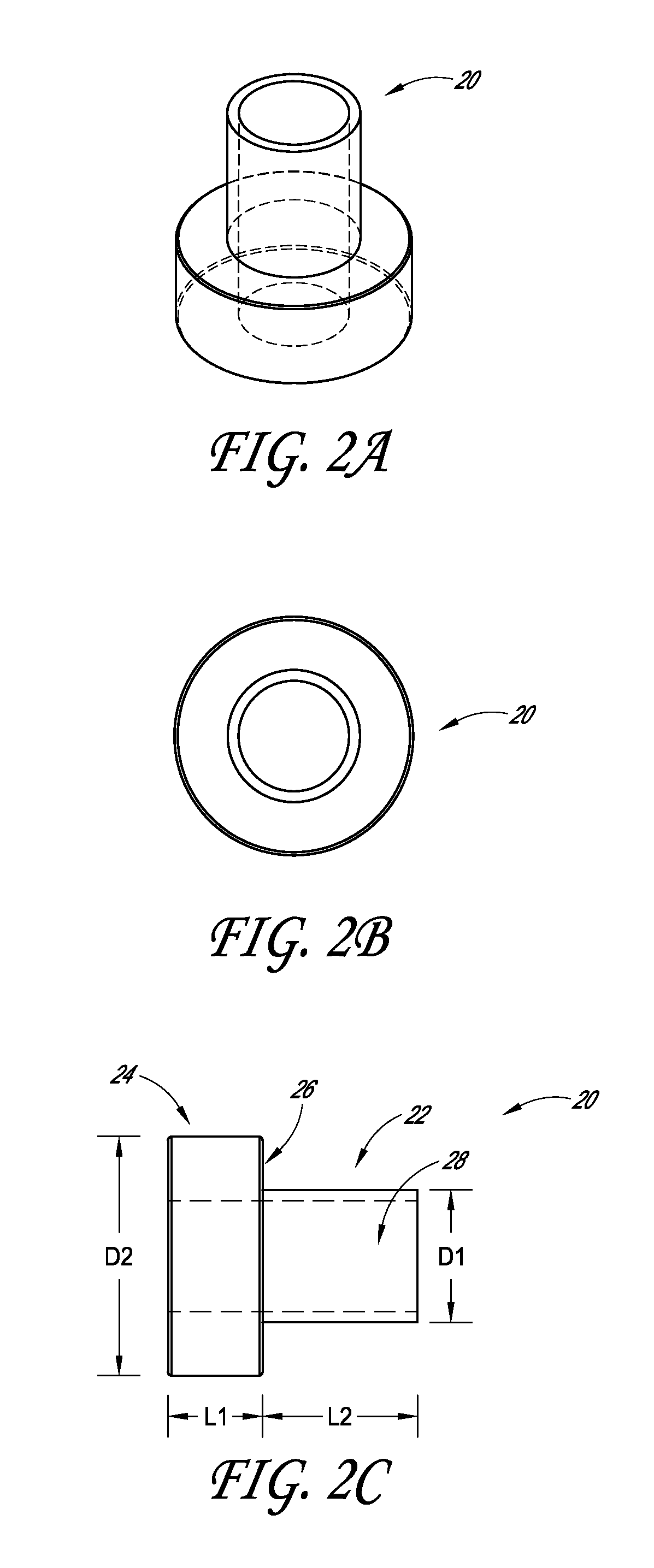Bearing stand-off devices
a stand-off device and bearing technology, applied in the direction of washers, bearing unit rigid supports, bolts, etc., can solve the problems of reduced bearing life, unsanitary conditions, limited cleaning fluid potential, etc., to facilitate fluid exit, facilitate fluid access, and facilitate inspection
- Summary
- Abstract
- Description
- Claims
- Application Information
AI Technical Summary
Benefits of technology
Problems solved by technology
Method used
Image
Examples
Embodiment Construction
[0031]Various embodiments of stand-off devices are described herein. Certain embodiments are discussed in the context of mating bearing assemblies with conveyor frames, due to particular utility in that context. However, the inventions disclosed herein can be used in other contexts as well, such as to mate bearing assemblies—or other types of assemblies—with other types of structures, such as frames or housings of non-conveyor systems. Further, although the inventions are described herein in reference to various embodiments and drawings, such embodiments and drawings are not intended to be limiting. On the contrary, variations and improvements may be accomplished in view of these teachings without deviating from the scope and spirit of the invention and are within the scope of this disclosure.
Overview
[0032]FIG. 1 shows an illustrative conveyor system including a stand-off device 20, with the view being generally parallel to the direction of belt travel. As shown, the system includes...
PUM
| Property | Measurement | Unit |
|---|---|---|
| length L2 | aaaaa | aaaaa |
| length L2 | aaaaa | aaaaa |
| length L2 | aaaaa | aaaaa |
Abstract
Description
Claims
Application Information
 Login to View More
Login to View More - R&D
- Intellectual Property
- Life Sciences
- Materials
- Tech Scout
- Unparalleled Data Quality
- Higher Quality Content
- 60% Fewer Hallucinations
Browse by: Latest US Patents, China's latest patents, Technical Efficacy Thesaurus, Application Domain, Technology Topic, Popular Technical Reports.
© 2025 PatSnap. All rights reserved.Legal|Privacy policy|Modern Slavery Act Transparency Statement|Sitemap|About US| Contact US: help@patsnap.com



